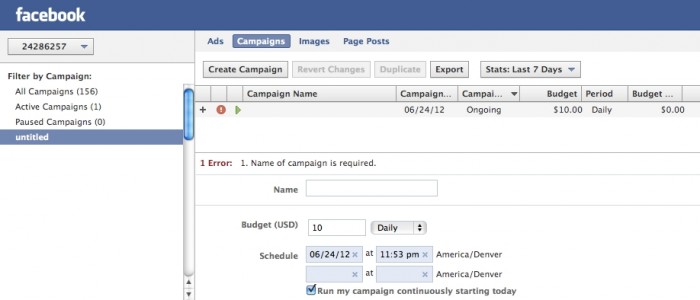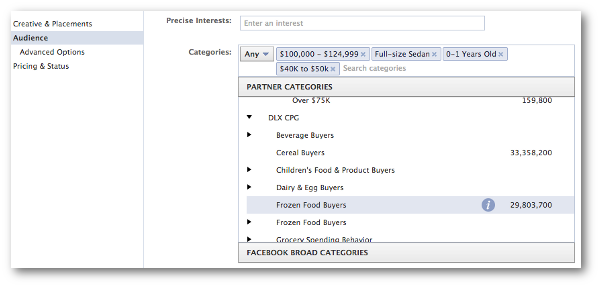The past several years of Facebook (and then Meta) advertising has been a whirlwind. Let’s be honest. Life in general has been a bit chaotic.
I stumbled on something today that filled me with sentimental feelings but also a nagging question. A 70-page PDF called The Facebook Ads Experiment: 12 Tips to Crazy Engagement from 2016 underscores just how much has changed. But what has remained the same?

I’m not going to lie. That PDF fills me with a lot of feelings, some of them uncomfortable. This was the early peak of my journey into entrepreneurship, which began in late 2011. That was 70 pages of inspiration. And it would be difficult to replicate much of the success I had that year.
But, I’ve found new inspiration now, and it’s a different kind of excitement in 2024. But I don’t recognize much of the Facebook ads landscape that I wrote about eight years ago.
So much has changed.
While that may be the case, some things have surely remained the same… right? What Facebook ads standards from 2016 could be repeated in 2024 without missing a beat?
I’d quickly find that the answer to this question was more challenging than I had expected. But, we’re going to answer it…
THIS… or Not
Part of the issue here is that I’ve been doing this since late 2011. As a result, I saw very early stages of (then) Facebook advertising. You may think that the most basic things have remained static, but they haven’t.
1. Campaign Structure? Nope. You may have forgotten that early Facebook ads included only a campaign and ad, no ad set.

2. Ads Manager? No way. We had the self-serve ad tool and Power Editor before Ads Manager came along. Eventually, Ads Manager and Power Editor would be combined.

3. Pixel? Please. The Facebook pixel was original a conversion pixel that was only used for tracking. Then there was a separate targeting pixel. Website custom audiences weren’t even a thing until 2014. Before that, you needed a third-party tool to do any website remarketing (FBX!).
4. Basic Targeting Options? Not really. Keep in mind that much of the power of interest targeting was previously powered by partner categories. They no longer exist.

We might need to be more generic when assembling this list.
What could we say about Facebook advertising in the early days of 2010 to 2016 that remains the same today?
The Universal Standards of Meta Ads
These things were true for Facebook advertising back in the day. They’re true for Meta ads now…
1. Test Like Crazy
Few things made me happier than running a Facebook ads experiment in 2014 (see that PDF from 2016). It was the best way to learn Facebook ads and push the limits of what was possible. It helped you answer the question, “Should I do this?” without relying on someone else’s answer.
And that hasn’t changed. Constantly test and experiment to figure out what works and what doesn’t. There’s no better way to get comfortable and gain confidence with Meta advertising.
2. The Audience Reached Drives Results
Sure, I meant “targeting” if we were discussing this five to 10 years ago. But the concept remains the same. Whether we’re manually selecting the audience or the algorithm is finding it for us, it’s critical that our ads reach the right people.
Ads aren’t magical. They won’t force people to perform the action we want. We need to reach the people most likely to perform that action.
3. The Best Ad Wins
I probably didn’t appreciate this as much as I should have years ago. I was too focused on all of the cool levers and mechanics of advertising. But the best ad wins the auction. The best ad keeps your costs down. The best ad gets conversions.
4. Don’t Ignore Underrated Placements
In 2013, I wrote about how you shouldn’t ignore the sidebar (right hand column) placement. Even then, advertisers were manually removing it because they perceived that it didn’t perform well. But the cost to run ads there was insanely low, which meant that the conversion rate was a secondary concern. I found the placement was profitable.
There are similar battles now. Advertisers will look at conversion rates and want to remove anything that doesn’t work as well. So, they stick with the feed placements and drive up costs.
Luckily, Meta has started making it clear that this isn’t a smart approach, and they now push Advantage+ Placements (though it’s not a great idea in 100% of cases).
5. Keep Measurement Simple
While Meta’s added metrics over the years, the problem has remained the same: Advertisers love to distract themselves with secondary metrics.
There are two metrics that will always be more important than any other:
- Number of Goal Actions
- Cost Per Goal Action
Everything else either contributed to these numbers or are complete distractions.
6. Unethical Strategies Aren’t Sustaining
It doesn’t matter whether it’s 2011, 2024, or 1982. Unethical marketers will always do unethical stuff for short-term gain.
Years ago, marketers and advertisers were still trying to game the system. They were scraping lists and creating custom audiences that helped them get (apparently) amazing results. Some survived, and many would either get banned for that or some other shady approach.
It’s the same now. You’ll see ads that you know break the rules, but there they are. And they’re getting crazy engagement. But, you know what? It’s not worth it. Every day, advertisers get banned. It won’t be you.
7. Facebook is Growing
Seriously, it’s an evergreen statement that Facebook (or Instagram or the Meta family of apps) is still growing. While this may not feel like an advertising reality, it is. We need an active audience to reach.
This is ridiculous. Check out Facebook’s Daily Active Users since 2016…

There’s only one noticeable drop in users, which happened between the third and fourth quarter of 2021. Stuff was crazy back then.
But Facebook is growing consistently again, and that is incredibly impressive for a 20-year-old platform.
8. Constant Change
If there’s anything that’s always true regarding Facebook/Meta advertising, it’s that it’s always changing. Always. It’s why, after more than 12 years, I’m still able to do this.
Dang, let’s just think about that. I wrote more than 600 blog posts during the first two years of my website. I published at least one video every day of 2023 and so far in 2024. In order to do that, there needs to be a whole lot to talk about.
And there is! The reason is that Meta advertising is in a constant state of change. Now matter how much it’s simplified, advertisers will always be confused. And support will always suck.
Your Turn
What else hasn’t changed since the beginning of Facebook advertising? Or what do you miss?
Let me know in the comments below!






